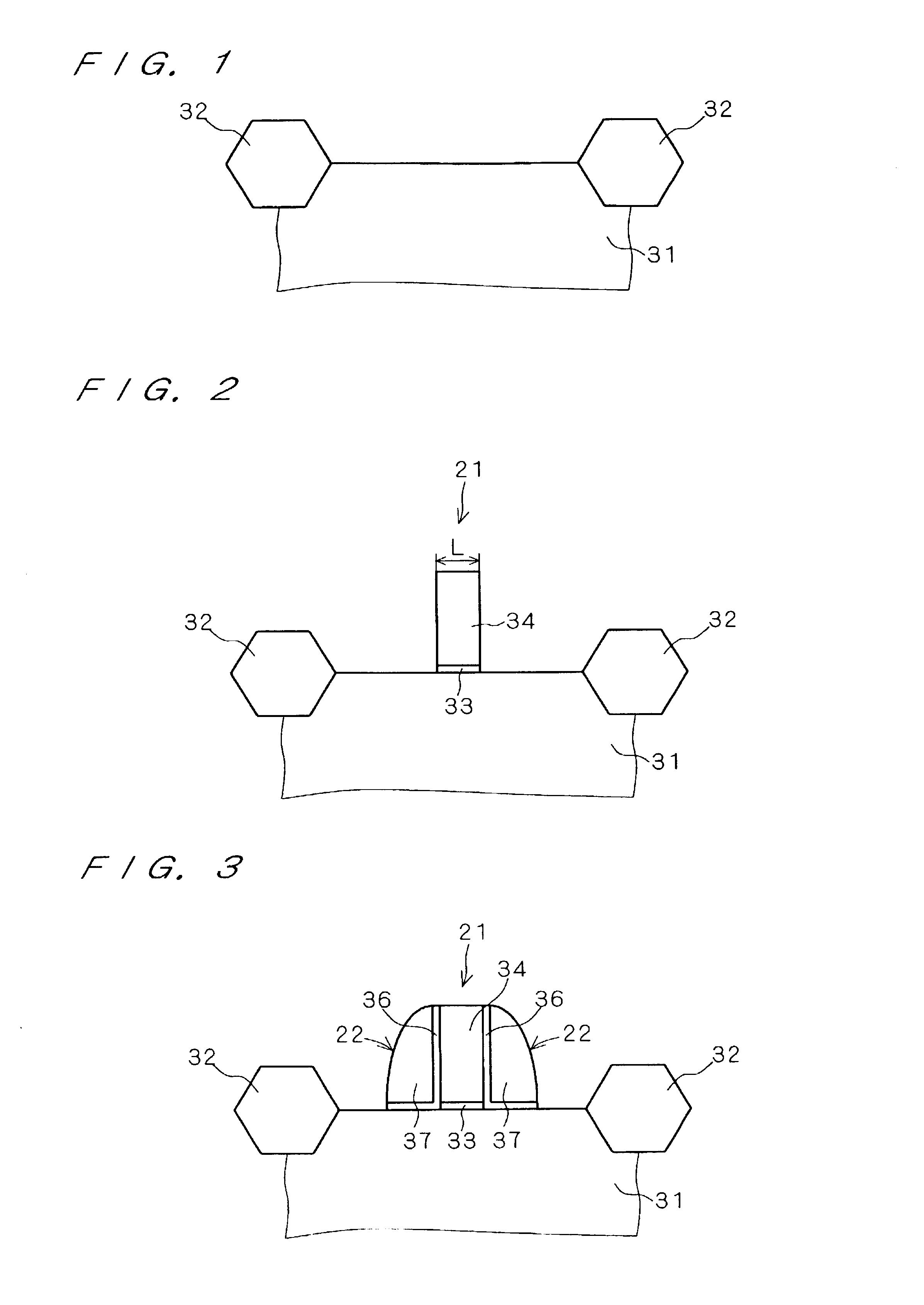Method of manufacturing semiconductor device
a manufacturing method and semiconductor technology, applied in the direction of semiconductor devices, basic electric elements, electrical equipment, etc., can solve the problems of reducing the size of the device, reducing the isolation region, and reducing so as to reduce the junction leakage current, prevent the surface roughness of the semiconductor substrate, and reduce the effect of junction leakage curren
- Summary
- Abstract
- Description
- Claims
- Application Information
AI Technical Summary
Benefits of technology
Problems solved by technology
Method used
Image
Examples
second preferred embodiment
[0118]FIGS. 9 to 16 are schematic diagrams illustrating a process sequence of a semiconductor device manufacturing method according to a second preferred embodiment of the present invention. In FIGS. 9 to 16, components having functions similar to those of the first preferred embodiment are denoted by the same reference numerals. The semiconductor device manufacturing method according to this preferred embodiment changes the order of executing the source and drain (impurity region) formation process and the protective oxidation process.
[0119]
[0120]FIG. 9 shows a cross-section after completion of an element isolation process. As in the first preferred embodiment, the isolation oxide film 32 is formed for element isolation on the major surface of the semiconductor substrate 31. The isolation oxide film 32 sections an element region of the semiconductor substrate 31.
[0121]
[0122]As in the first preferred embodiment, the gate insulating film 33 (cf. FIG. 10) having a thickness of 0.5 to ...
third preferred embodiment
[0148]FIGS. 17 to 25 are schematic diagrams illustrating a process sequence of a semiconductor device manufacturing method according to a third preferred embodiment of the present invention. In FIGS. 17 to 25, components having functions similar to those of the first and second preferred embodiments are denoted by the same reference numerals. The semiconductor device manufacturing method according to this preferred embodiment differs from the first preferred embodiment in that impurity implantation for acceleration of oxidation is performed prior to protective oxidation. The details of the manufacturing method will be described hereinbelow.
[0149]
[0150]FIG. 17 shows a cross-section after completion of an element isolation process. As in the first preferred embodiment, the isolation oxide film 32 is formed for element isolation on the major surface of the semiconductor substrate 31.
[0151]
[0152]As in the first preferred embodiment, the gate insulating film 33 (cf. FIG. 18) having a thi...
fourth preferred embodiment
[0181]FIGS. 26 to 34 are schematic diagrams illustrating a process sequence of a semiconductor device manufacturing method according to a third preferred embodiment of the present invention. In FIGS. 26 to 34, components having functions similar to those of the first through third preferred embodiments are denoted by the same reference numerals. The semiconductor device manufacturing method according to this preferred embodiment differs from the first through third preferred embodiments in that the source and drain are raised. The details of the manufacturing method will be described hereinbelow.
[0182]
[0183]FIG. 26 shows a cross-section after completion of an element isolation process. As in the first preferred embodiment, the isolation oxide film 32 is formed for element isolation on the major surface of the semiconductor substrate 31.
[0184]
[0185]As in the first preferred embodiment, the gate insulating film 33 (cf. FIG. 27) having a thickness of 0.5 to 9 nm is formed on the major ...
PUM
 Login to View More
Login to View More Abstract
Description
Claims
Application Information
 Login to View More
Login to View More - R&D
- Intellectual Property
- Life Sciences
- Materials
- Tech Scout
- Unparalleled Data Quality
- Higher Quality Content
- 60% Fewer Hallucinations
Browse by: Latest US Patents, China's latest patents, Technical Efficacy Thesaurus, Application Domain, Technology Topic, Popular Technical Reports.
© 2025 PatSnap. All rights reserved.Legal|Privacy policy|Modern Slavery Act Transparency Statement|Sitemap|About US| Contact US: help@patsnap.com



